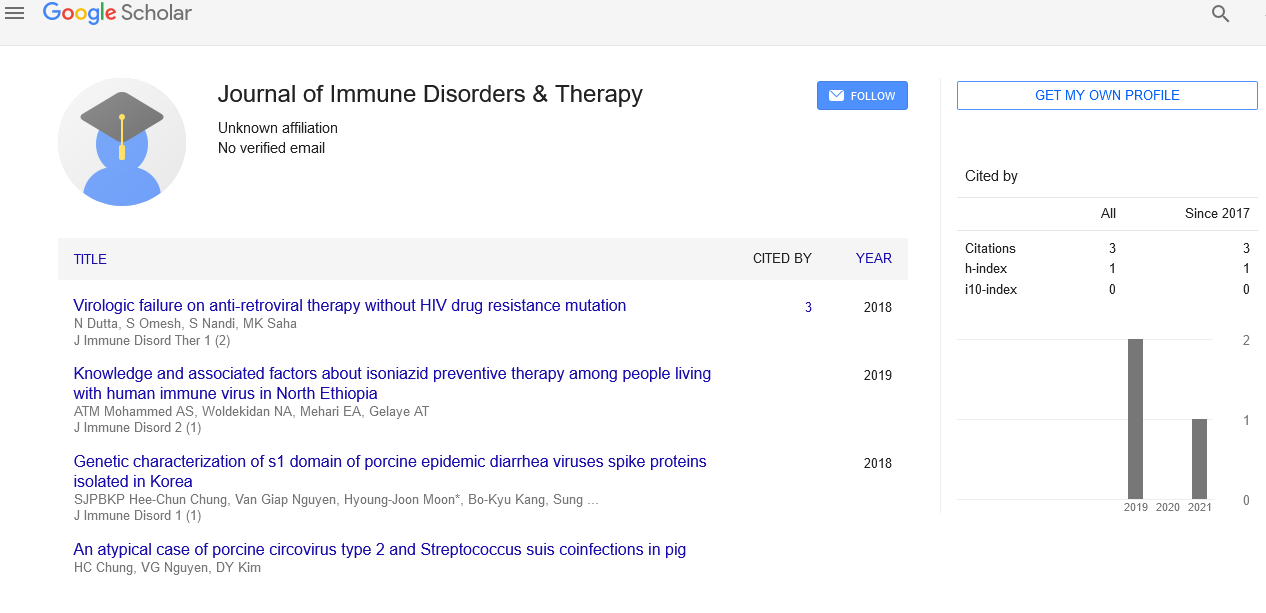Regulation of Gene in Immune Cells
Received: 03-Dec-2021 Accepted Date: Dec 17, 2021; Published: 24-Dec-2021
This open-access article is distributed under the terms of the Creative Commons Attribution Non-Commercial License (CC BY-NC) (http://creativecommons.org/licenses/by-nc/4.0/), which permits reuse, distribution and reproduction of the article, provided that the original work is properly cited and the reuse is restricted to noncommercial purposes. For commercial reuse, contact reprints@pulsus.com
Abstract
Editorial
Control of quality articulation in different cells of the safe (both versatile and intrinsic) framework at the transcriptional level has been read up for a really long time, and has given significant and basic data viewing different control instruments as well as recognized critical variables that are expected for transcriptionally managing the statement of qualities expected for mounting fitting insusceptible reactions. We had the option to recognize both atomic components and physiological advances associated with transducing immunological signs to set off right invulnerable reactions brilliantly by joining these ex vivo research with in vivo investigations, generally utilizing mouse models. These discoveries shed light on the rationale that administers how the versatile and inborn arms of the resistant framework direct explicit qualities at the degree of underlying and utilitarian collapsing of chromatin spaces, epigenetic guideline, long-range connections that bring advertiser areas and administrative enhancers together, explicit record factors expected for ancestry responsibility and separation, and noncoding RNAs. While reductionist ways to deal with examining individual qualities and quality groups in a cell were important, they were inadmissible on the grounds that such instruments in detached as well as refined cells couldn’t prompt a frameworks level point of view of quality guideline. Whenever critical profundity of examination was achieved involving single cell strategies in creature tissue, close by cells that seemed, by all accounts, to be indistinguishable ended up having huge contrasts. Single cell approaches were first utilized in quite a while when how much organic example accessible was restricted. Notwithstanding, on account of the great throughput advances as of now accessible, profiling countless different cells inside a populace is currently rather basic. With these awesome innovative headways in researching cell heterogeneity and uncovering strange cell populaces in creature tissues/organs through single cell investigation, one would contemplate whether we truly need to understand human science at single cell goal. Physical milestones, tissue and organ conveyances have described the human body for ages. The clarification could be found in the way that in people, the astounding cell heterogeneity commonly decides wiped out states, their beginnings, and ensuing treatment. For instance, contingent upon their sub-atomic and utilitarian states, two apparently “comparative” cells in a similar organ might react to restorative mediation in an unexpected way. Therefore, treating all close by cells in a given tissue utilizing a “shotgun” method may not be fundamental or convey our desired accuracy in current medication. In spite of impressive specialized headways, how we might interpret quality guideline in the invulnerable framework is as yet restricted because of the assortment of the cells that make up the framework. Safe cells contrast as far as formative stages, capacity, and cell types (versatile versus intrinsic insusceptible cells), as well as area (essential versus auxiliary lymphoid organs) and circling invulnerable cells through the blood and lymphatic frameworks. Besides, associations between essential invulnerable cells of a similar ancestry and auxiliary non-insusceptible cell types and tissues are normally significant in the action of essential safe cells. Clonality adds one more layer of entanglement to insusceptible cell distinguishing proof: they show trademark surface safe receptors with discrete hereditary variety that may practically react contrastingly to a different arrangement of ligands. Because of these intricacies, as well as the way that apparently indistinguishable invulnerable cells can work in various pieces of the body contingent upon the idea of the imperative resistant reaction, it is important that they be profiled at high goal to decide whether they truly do for sure come from a similar beginning and, thus, react much the same way during a safe reaction.
Acknowledgement
The authors are grateful to the journal editor and the anonymous reviewers for their helpful comments and suggestions.
Conflict of Interest
The authors declared no potential conflicts of interest for the research, authorship, and/or publication of this article.





